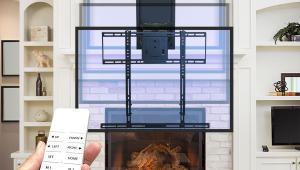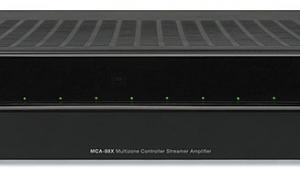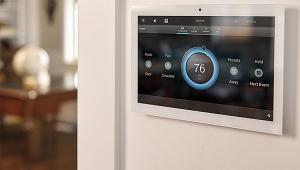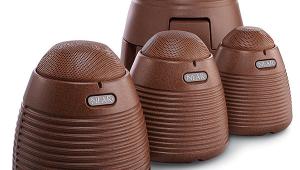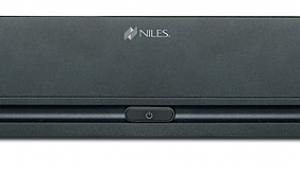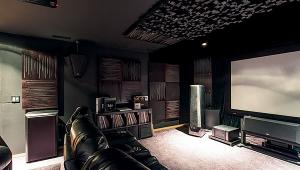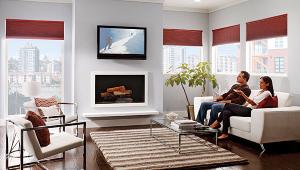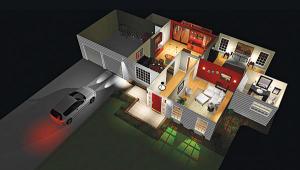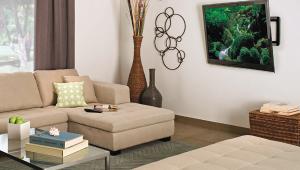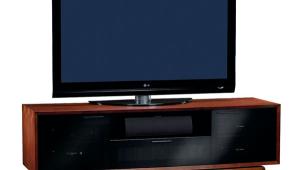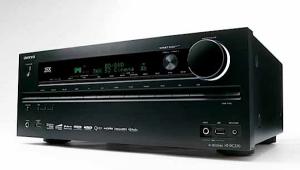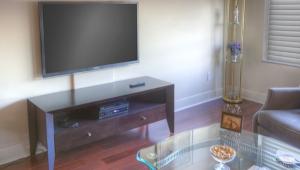NEAR IG 6 Outdoor Speaker System Page 2
Back-Breaking Work
Installing the speakers wasn’t as easy as mounting them on a post, which is how my former speakers were installed. I wanted to find the ideal location to place each one, not only to satisfy exterior décor ideals but also to avoid any underground sprinkler lines. I spent an afternoon moving the speakers around the yard while they were wired above ground until I came up with suitable locations that sounded good and avoided any installation pitfalls. Unfortunately, the best position for the subwoofer had four sprinkler lines directly underneath it, so I had to choose option B.
While the speakers were above ground, I auditioned them in stereo using a Parasound Z-amp to power the main speakers and the 6XL to power the subwoofer. I ultimately, on NEAR’s recommendation, decided to run the main speakers in parallel (mono mode) using one channel of the 6XL with the High Pass filter (85 Hz) engaged for the mains, and the other channel with the Low Pass filter engaged for the sub. Apparently, it’s not uncommon to run a combined L+R mono signal to all speakers in an outdoor installation, where listeners rarely find themselves settled in the stereo sweet spot and where it’s more important to get even coverage over the full listening area. Configuring the system this way resulted in a nominal 4-ohm load on the mains channel of the amplifier and a nominal 8-ohm load on the subwoofer channel, but the 6XL was more than up to the task.
Digging holes is never fun, especially when rainfall in Northern California has been nonexistent for the past few years and the ground is packed hard. In order to install the IG 6 speakers, the holes needed to be about 20 inches wide and deep. NEAR recommends placing 6 inches of gravel underneath each speaker, topped with drainage fabric to put a buffer between speaker and stone. Connections were housed in three NEAR IE-1 Direct-Burial Junction Boxes ($50 each). My neighbor, Walt, and I spent nearly a full day digging holes, running trenches for wiring, and hooking up all of the speakers.
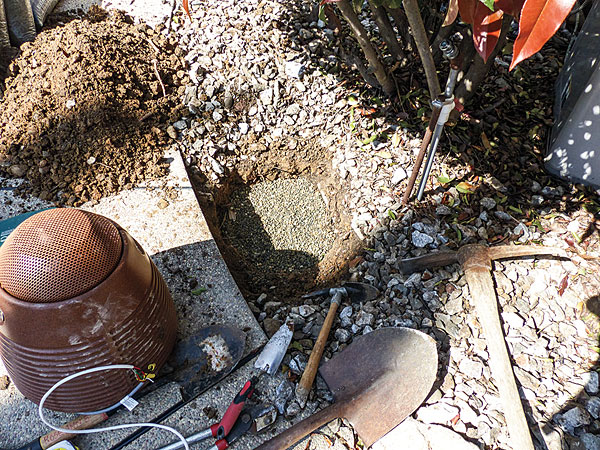
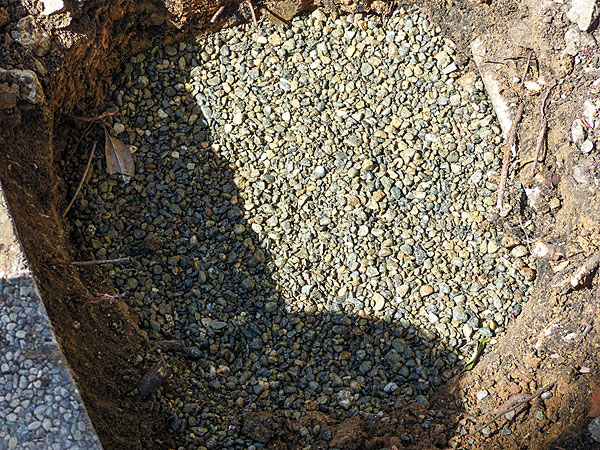

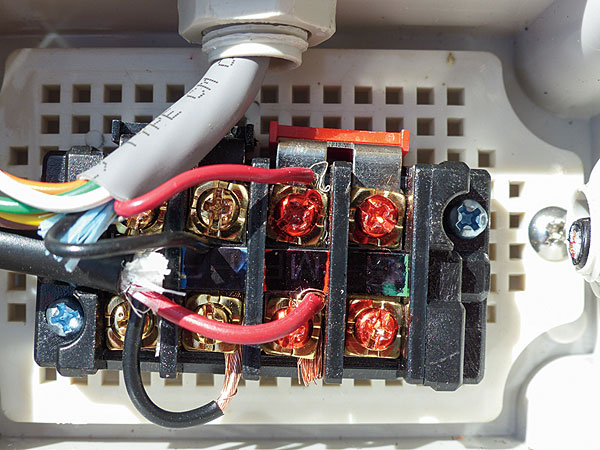
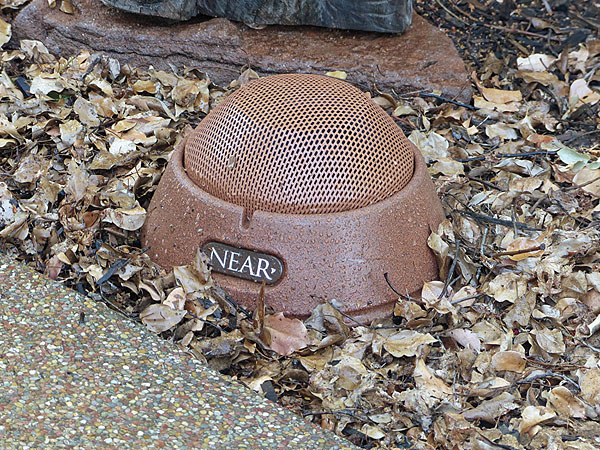
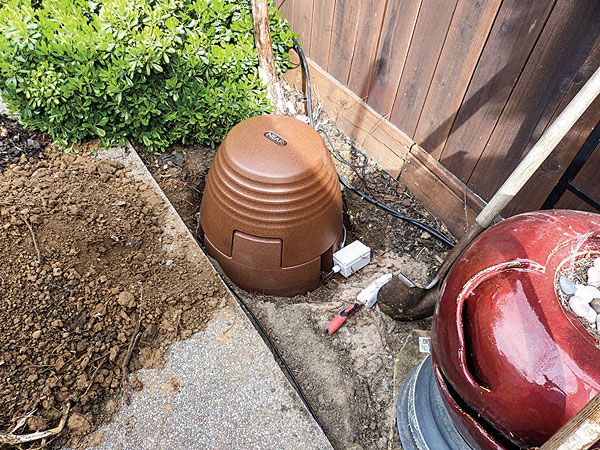
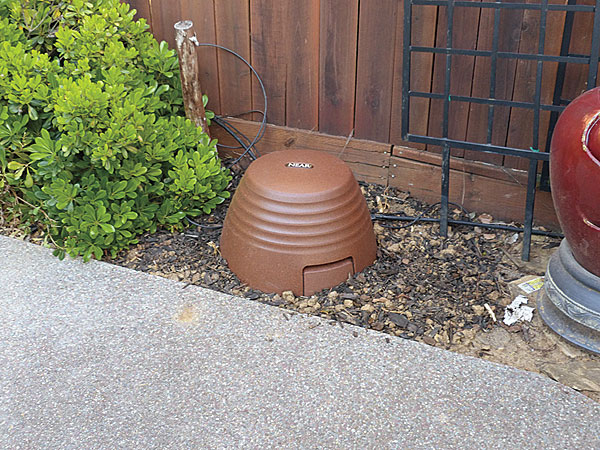
With everything installed, it was time for some serious listening. I utilized the Zone 2 output on my Marantz AV8802 processor and used various sources for listening, including an Oppo BDP-103D Blu-ray player and a Squeezebox Touch, as well as a Pandora stream taken directly from the Marantz. Thankfully, my Wi-Fi signal reaches my backyard, so control of all components was accomplished by an iPad using an assortment of apps from the equipment manufacturers for source selection and volume control.
In Use
While experimenting with speaker locations, I was astonished by how great these speakers sounded simply sitting on the ground. When they were running in stereo mode, the separation between channels was distinct and provided pinpoint imaging. The only downfall of running in stereo was that when I got out of the backyard sweet spot, one speaker would end up drowning out the other. Running them in mono not only fixed this anomaly but also made it possible to use only one 6XL amplifier for the whole three-piece backyard system.
Once the pair of IG 6 speakers and the IGS 12 subwoofer were permanently in place, I noticed a clear improvement in the midrange, with voices coming to life, and greater depth in the soundstage along with better bass response. Additionally, the omnidirectional design of the speakers works as advertised. As I moved around my yard, the audio was consistently loud, and I experienced a uniform blanket of sound without it being overly loud in any one location.
Run-D.M.C.’s “Walk This Way” (Greatest Hits CD, 2002) is arguably their most recognized song among the masses. This adapted Aerosmith cover features a great, tight bass track, which the IG speakers handled with ease, especially at their very low end. The addition of the subwoofer did make a notable difference in the quality of the music, providing a little more oomph, which definitely enhanced the audio.
The same could be said of Diana Krall’s “My Love Is” (Love Scenes CD, 1997). The detail that the NEAR speakers spotlighted was amazing for an outdoor space. I could hear the bass player’s fingers sliding along the strings, which is something that I listen for when I review high-end indoor speakers, but I didn’t expect to be able to hear such intricate detail in an outdoor environment. This was demonstrated further with Helen Merrill’s “Quand Tu Dors Pres de Moi” (Paris for Lovers CD, 2005), where I could actually hear the vibration of the saxophone’s reed—now that’s audio at its finest.
Even listening to San Francisco Giants broadcaster Jon Miller’s classic voice on AM radio was an aural treat. His baritone was clear and succinct, sounding as if he was calling the game in my backyard. Furthermore, when I heard the crack of the bat and the roar of the crowd, the sounds put me right into AT&T Park—very impressive indeed.
What really blew me away about the NEAR speakers was that I didn’t have to listen to music very loud to appreciate them. Even at low volume levels, the clarity was mesmerizing. That’s good—I live in the suburbs, where my neighbors are within 30 feet of me on all three sides of my house, so I can’t blast the audio as if I was out in the country. But that’s not to say I didn’t let loose on occasion to see how loud I could go. Even at high playback levels, these speakers, driven by the 6XL, remained sonically clear while belting out some serious SPLs. So if you’re into backyard dance parties, you won’t be disappointed.
Wrapping It Up
Given its high total system price of more than $4,600, it’s likely this speaker system will cater to the more well-heeled households in our land. But you do get a lot for your money. The NEAR IG 6 and IGS 12 combo, driven by the 6XL amplifier, is among the best speaker systems I’ve heard—for either an exterior or interior design. Music comes alive wherever you are in the yard. Furthermore, you don’t need to listen at insanely loud levels to appreciate the quality of the sound, something your neighbors will thank you for.
If you’re running a standard 8-ohm installation, you might save a few bucks by swapping the 6XL with a less pricey amplifier, though any replacement should have high- and low-pass filters and dedicated trims for each channel, and be powerful enough to drive these relatively inefficient speakers. But you won’t go wrong with NEAR’s amp, and, as reviewed here, this is one fine system that I can highly recommend.
